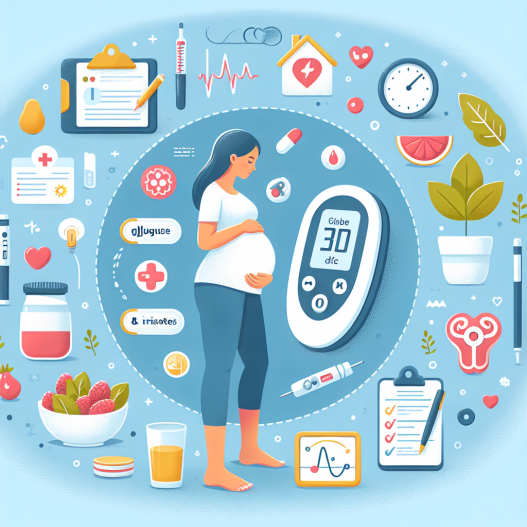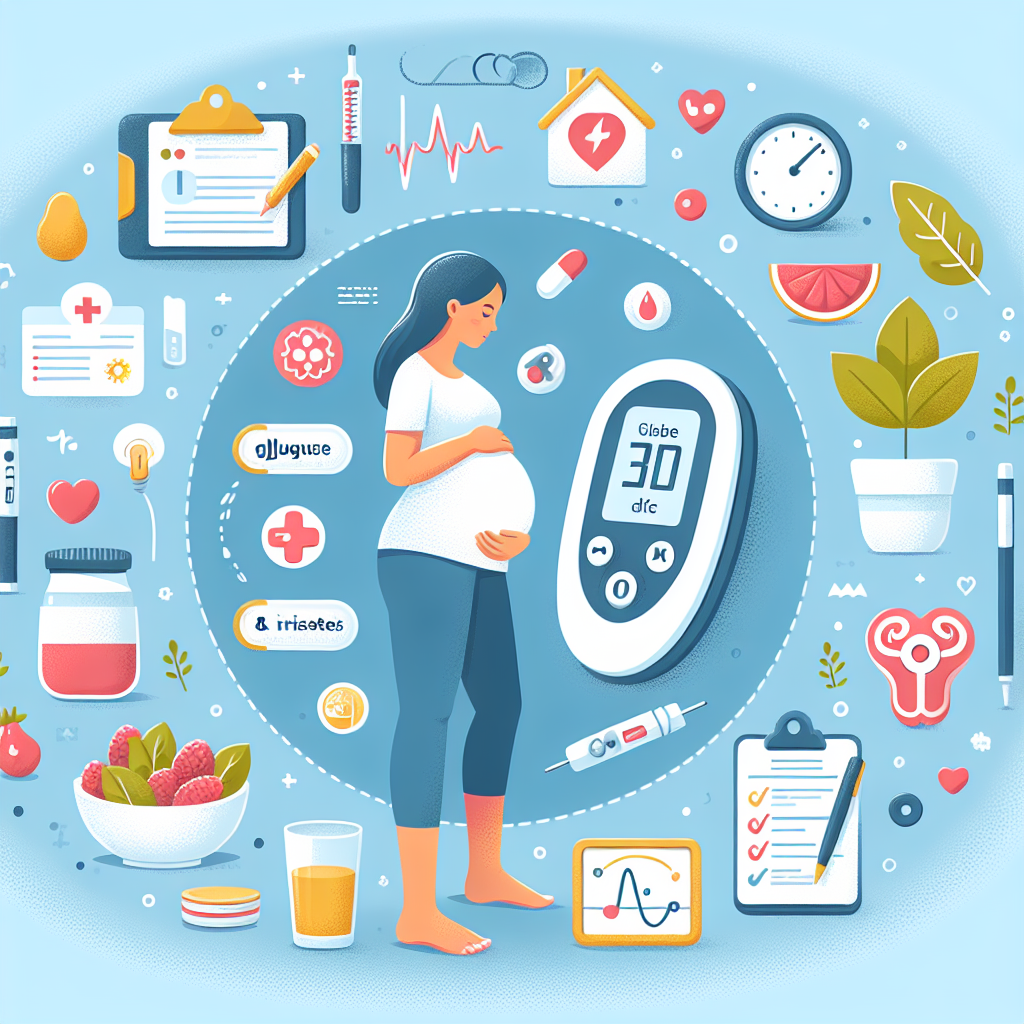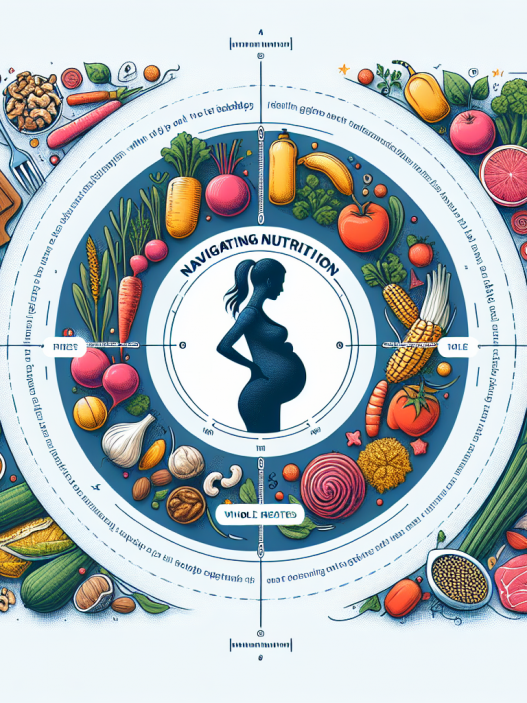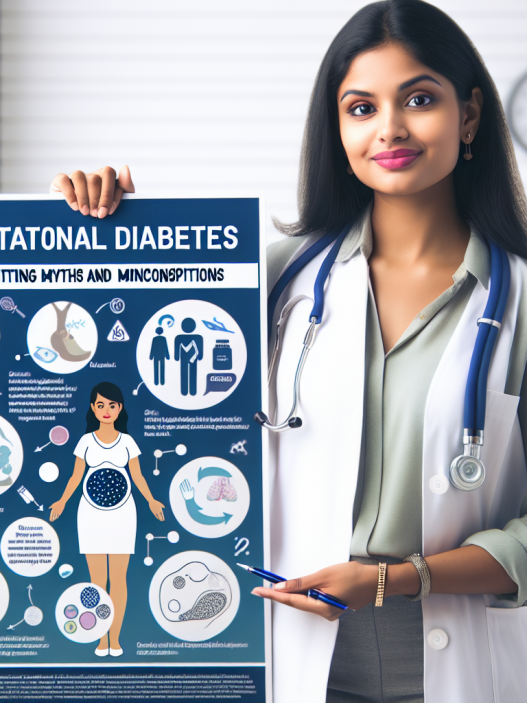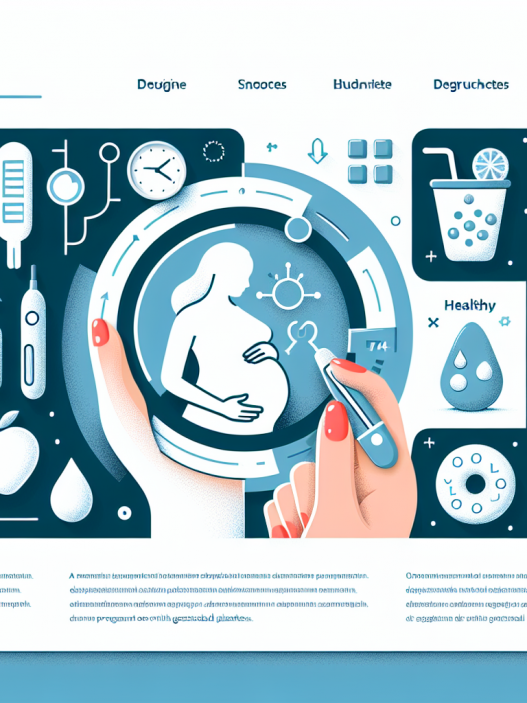[ad_1]
Gestational diabetes is a type of diabetes that can develop during pregnancy. This condition affects how your cells use sugar (glucose), leading to elevated blood sugar levels that can impact both the mother and the developing baby. Understanding gestational diabetes—its symptoms, associated risks, and management options—is crucial for expectant mothers. This blog aims to provide a comprehensive overview, empowering readers with the necessary knowledge to navigate this condition.
What is Gestational Diabetes? Understanding the Basics
Gestational diabetes occurs when your body cannot produce enough insulin during pregnancy. Insulin is essential for converting glucose into energy, and without adequate amounts, blood sugar levels can rise to harmful levels. Although the cause of gestational diabetes isn’t entirely understood, it is believed to result from hormonal changes during pregnancy, which can lead to insulin resistance.
Notably, gestational diabetes usually develops around the 24th to 28th week of pregnancy and may affect up to 10% of pregnant women. While it typically resolves after childbirth, women who have had gestational diabetes are at a higher risk of developing type 2 diabetes later in life. Therefore, understanding the implications of gestational diabetes is crucial for long-term health.
Common Symptoms of Gestational Diabetes: What to Look For
Recognizing the symptoms of gestational diabetes is vital for timely management and intervention. Unfortunately, many women may not experience obvious symptoms, which can make it challenging to diagnose the condition without routine screening tests. However, there are several signs to be aware of:
One common symptom is increased thirst. Women with gestational diabetes often find themselves feeling unusually thirsty and may drink more than usual. Another symptom is frequent urination. As blood sugar levels rise, the kidneys work overtime to filter excess glucose, leading to increased urination. These symptoms might not be alarming on their own but combined with other factors might indicate a need for further investigation.
Other symptoms can include fatigue and blurred vision. Fatigue may occur due to the body’s excessive struggle to manage blood sugar levels, while blurred vision can arise from changes in fluid levels that affect the eyes. It’s essential for expectant mothers to monitor these signs during pregnancy and inform their healthcare providers if they suspect they may have gestational diabetes.
Risks Associated with Gestational Diabetes: Understanding the Implications
While gestational diabetes can often be managed effectively, it carries certain risks that can affect both mothers and babies. For mothers, one of the primary risks is the higher likelihood of developing type 2 diabetes later in life. Studies show that women who have experienced gestational diabetes are more than seven times more likely to develop type 2 diabetes within 5 to 10 years after delivery.
For the baby, risks can include macrosomia, or excessive birth weight, which can lead to complications during delivery. Babies who are born too large may experience injuries during birth, such as shoulder dystocia. Additionally, gestational diabetes can lead to preterm birth and an increased chance of hospitalization for the newborn due to low blood sugar levels.
Moreover, babies born to mothers with gestational diabetes are at an elevated risk of developing obesity and type 2 diabetes later in life. Therefore, it is crucial for expectant mothers to be aware of these risks and engage in proactive management strategies to mitigate potential complications for both themselves and their babies.
Diagnosing Gestational Diabetes: The Importance of Screening
Early diagnosis of gestational diabetes is paramount for effective management. Standard practice involves screening for the condition during the second trimester, typically between weeks 24 and 28 of pregnancy. The two-step testing process usually begins with an initial glucola test, where a blood sample is taken approximately an hour after consuming a glucose drink. If the results indicate elevated blood sugar levels, a follow-up oral glucose tolerance test (OGTT) is conducted for a more definitive diagnosis.
It’s essential to note that risk factors may prompt earlier testing. Considerations such as a history of gestational diabetes in previous pregnancies, being overweight, or having a strong family history of diabetes warrant discussions with healthcare providers about individualized screening plans.
Once diagnosed, it’s vital for pregnant women to understand that gestational diabetes is manageable. With appropriate monitoring and lifestyle modifications, many women can maintain healthy blood sugar levels throughout their pregnancies.
Management of Gestational Diabetes: Tips and Strategies
Managing gestational diabetes involves a multi-faceted approach, primarily focusing on diet, exercise, and monitoring blood sugar levels. A well-balanced diet rich in whole grains, lean proteins, healthy fats, and an abundance of fruits and vegetables is crucial. Expectant mothers should also monitor carbohydrate intake, spreading it evenly throughout the day to avoid spikes in blood sugar levels.
Regular physical activity plays a significant role in managing gestational diabetes. Engaging in moderate exercise, such as walking, swimming, or prenatal yoga, can help improve insulin sensitivity and lower blood sugar levels. It’s essential, however, for pregnant women to consult their healthcare provider before starting or modifying any exercise routines to ensure they are safe.
In some cases, dietary changes and exercise may not be enough to control blood sugar levels, and medication might be necessary. This could involve insulin injections or other medications deemed appropriate by healthcare providers. Ultimately, a collaborative approach involving healthcare professionals, a nutritionist, and the expectant mother can significantly enhance the management of gestational diabetes.
Long-Term Outlook for Women with Gestational Diabetes: What to Expect
For most women, gestational diabetes resolves after giving birth, but it’s essential to remain vigilant about long-term health. The likelihood of developing type 2 diabetes increases significantly in years following pregnancy, making follow-up care crucial. Regular blood sugar monitoring, lifestyle modifications, and routine check-ups can aid in reducing the risk of persistent blood sugar issues.
Additionally, women who have previously experienced gestational diabetes should consider engaging in preventive strategies to maintain a healthy weight and promote an active lifestyle. Understanding the importance of nutrition and consistent exercise can significantly enhance long-term health.
Finally, support from healthcare providers and shared experiences with other mothers can be invaluable. Participating in support groups can provide women with resources, encouragement, and a sense of community as they navigate their well-being post-pregnancy.
In conclusion, understanding gestational diabetes is essential for expectant mothers. By recognizing the symptoms, being aware of the associated risks, engaging in proactive management, and planning for long-term health, women can navigate this condition effectively. Through education and support, women can emerge from their pregnancy healthily, ensuring the best outcomes for both themselves and their children.
[ad_2]










